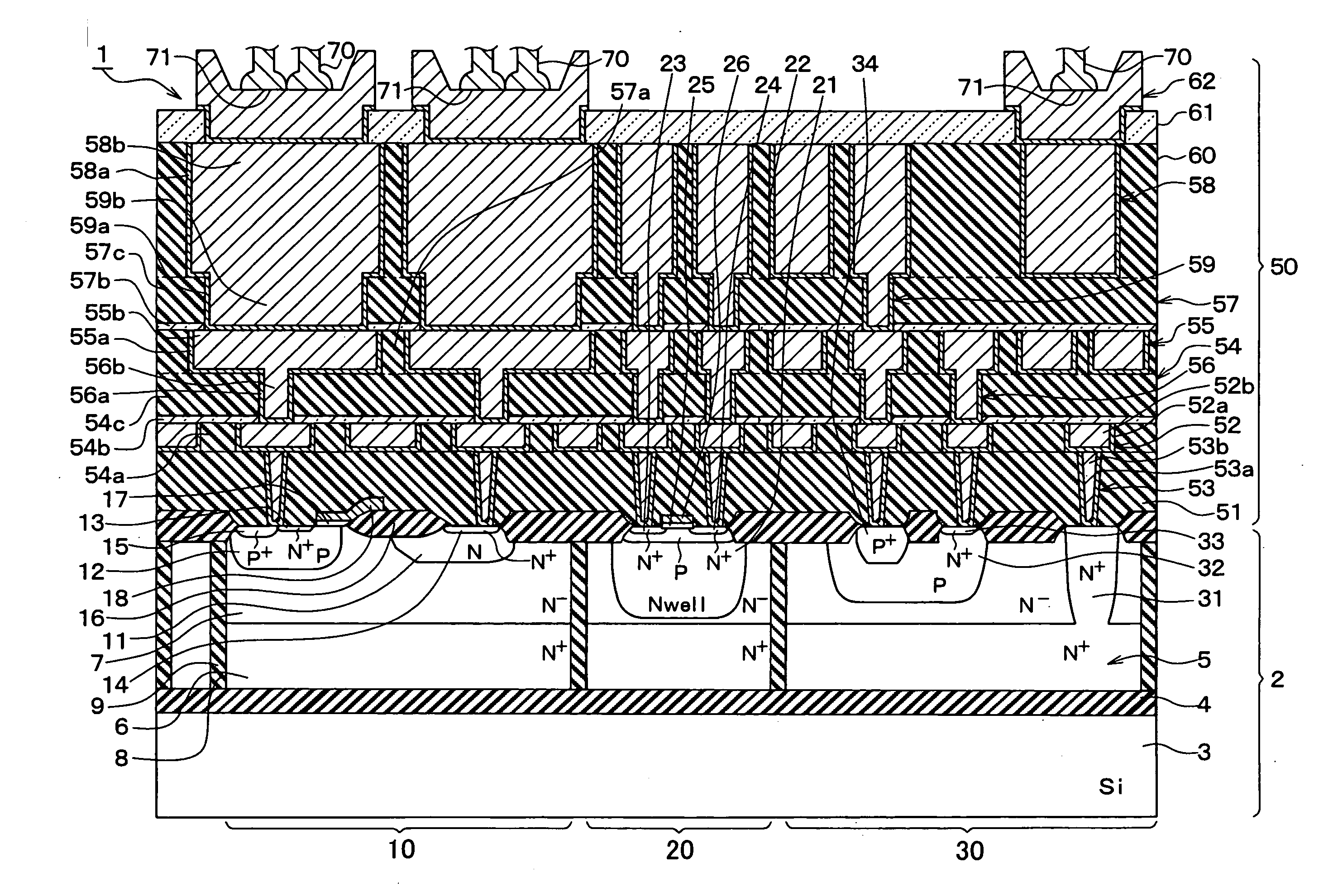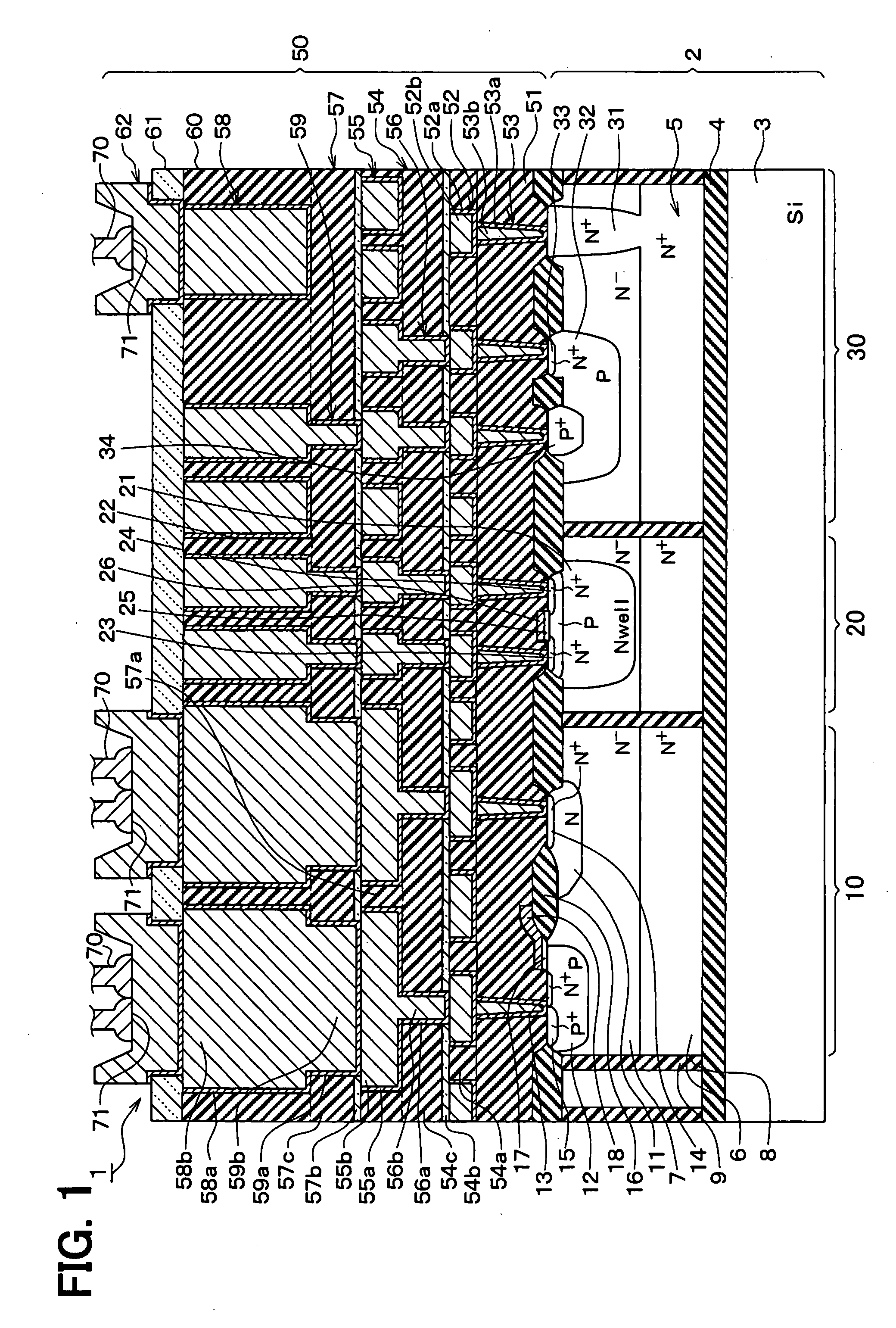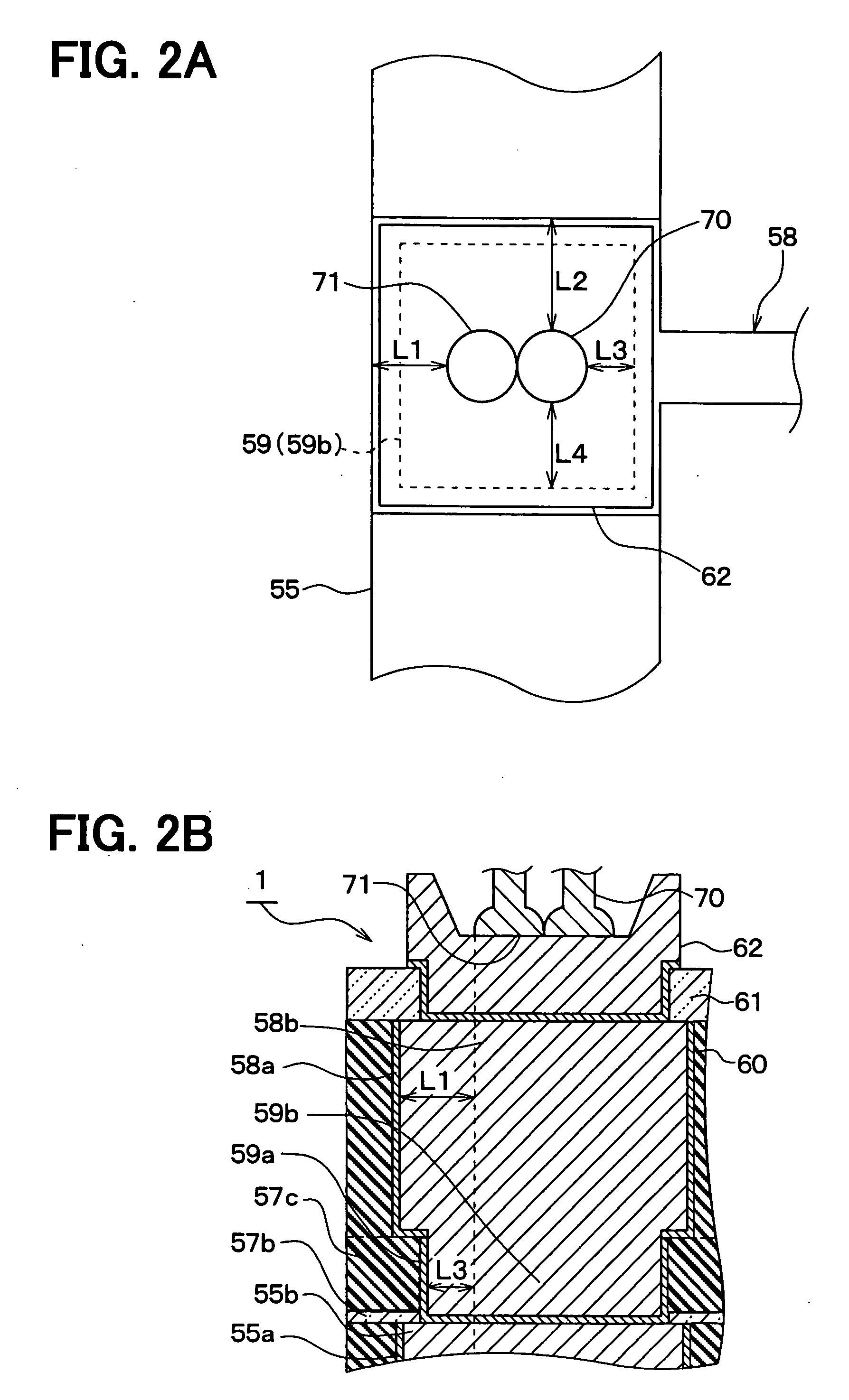Semiconductor device, wiring of semiconductor device, and method of forming wiring
a semiconductor device and semiconductor technology, applied in the direction of semiconductor devices, semiconductor/solid-state device details, electrical equipment, etc., can solve the problems of increasing the manufacturing step and cost accordingly, the wiring resistance of the wiring becomes large, and the layer cracking and breakage of the semiconductor element cannot always be prevented
- Summary
- Abstract
- Description
- Claims
- Application Information
AI Technical Summary
Benefits of technology
Problems solved by technology
Method used
Image
Examples
first embodiment
[0040] Referring to FIG. 1, a semiconductor device 1 according to a first embodiment of the present invention includes a laterally diffused metal oxide semiconductor (LDMOS) 10, a complementary metal-oxide-semiconductor (CMOS) 20, and a bipolar transistor 30, which are integrated together to form an integrated circuit. The semiconductor device 1 is formed by using a silicon on insulator (SOI) substrate 2.
[0041] The SOI substrate 2 has a structure such that a silicon layer 5 as an active layer is disposed on a surface of a silicon substrate 3 through an insulator layer 4. The silicon substrate 3 acts as a supporting substrate, and the insulator layer 4 is a silicon oxide film, for example. The silicon layer 5 includes a N+ type layer 6 and a N− type 7 formed to a surface portion of the N+ type layer 6. The LDMOS 10, the CMOS 20, and the bipolar transistor 30 are formed in first, second, and third regions of the silicon layer 5. The first, second, and third regions are separated from...
second embodiment
[0098] A second embodiment of the second embodiment is described below with reference to FIG. 13. As shown in FIG. 13, the second embodiment refers to a case where free space 90 exists on a layer where the top wiring-electrode layer 58 is formed. The free space 90 is a region other than regions in which the LDMOS 10, a logic circuit constructed with the CMOS 20 and the bipolar transistor 30, and the bonding pad 62 for electrically connecting each portion of the logic circuit are formed.
[0099] A dummy pattern 91 of the top wiring-electrode layer 58 is formed to the free space 90, and a bonding pad 62 is formed on the dummy pattern 91 so that a bonding wire 70 is connectable to the top wiring-electrode layer 58 through the bonding pad 62. As long as the number of pins of a package accommodating the semiconductor device 1 is allowed, the pins and the dummy pattern 91 are connected through the bonding wire 70.
[0100] According to the second embodiment, the dummy pattern 91 of the top w...
third embodiment
[0110] A third embodiment of the present invention is described below with reference to FIGS. 16A-18. The third embodiment refers to a method of forming a wiring layer having a large thickness. For example, the wiring forming method according to the third embodiment can be applied to form the top wiring-electrode layer 58 of the semiconductor device 1.
[0111] (First Interlayer Dielectric Film Forming Process)
[0112] First, a substrate 110 is prepared. As shown in FIG. 16A, a lower wiring layer 111 is formed on a surface 110a of the substrate 110 in advance. The substrate 110 is a silicon substrate, a SOI substrate, or the like. The lower wiring layer 111 is formed with copper (Cu), aluminum (Al), molybdenum (Mo), or the like. The lower wiring layer 111 may be provided with a barrier layer (not shown) for diffusion prevention.
[0113] Then, a first interlayer dielectric film 112 is formed on the surface 110a of the substrate 110. The first interlayer dielectric film 112 has a first th...
PUM
 Login to View More
Login to View More Abstract
Description
Claims
Application Information
 Login to View More
Login to View More - R&D
- Intellectual Property
- Life Sciences
- Materials
- Tech Scout
- Unparalleled Data Quality
- Higher Quality Content
- 60% Fewer Hallucinations
Browse by: Latest US Patents, China's latest patents, Technical Efficacy Thesaurus, Application Domain, Technology Topic, Popular Technical Reports.
© 2025 PatSnap. All rights reserved.Legal|Privacy policy|Modern Slavery Act Transparency Statement|Sitemap|About US| Contact US: help@patsnap.com



